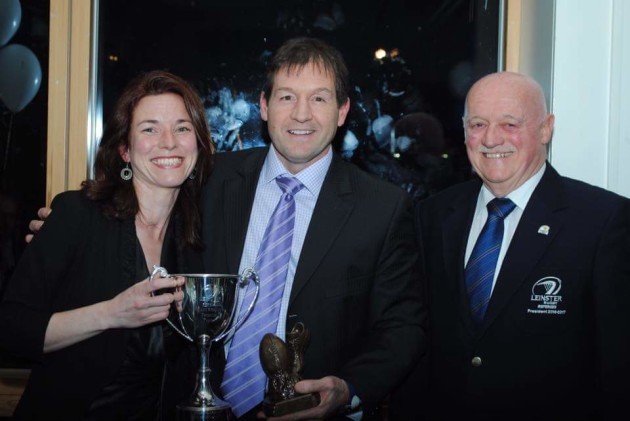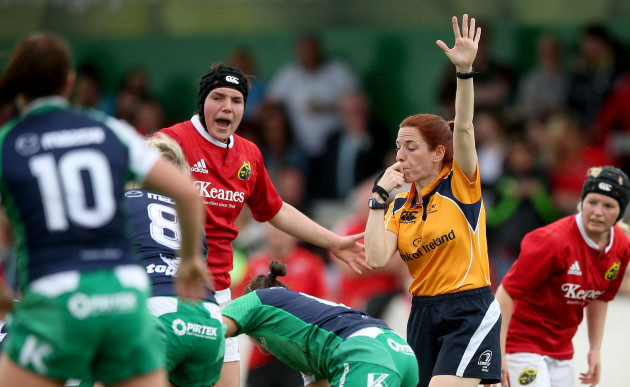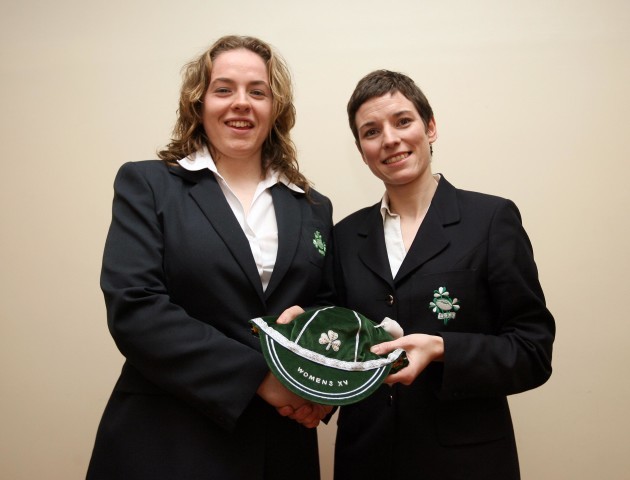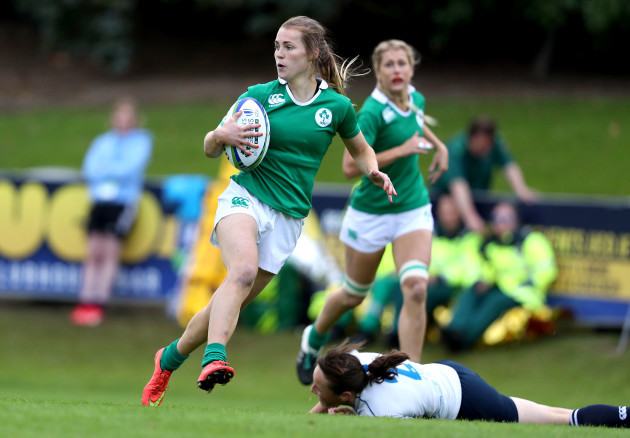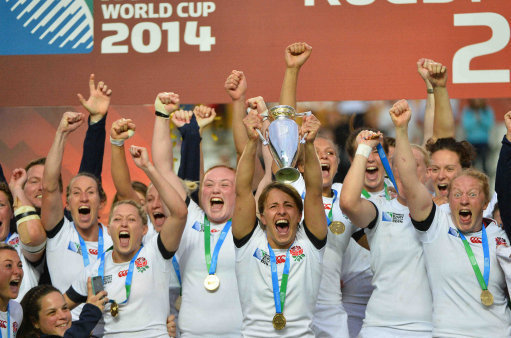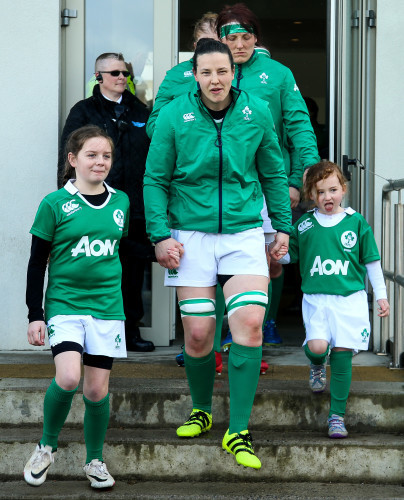“THE QUESTION IS not so much who you are, but who can you become?”
At first, this line on Su Carty’s website would seem to be about herself, but get talking to her for five minutes and you realise her focus is solely on the growth of women’s rugby.
And the evidence is there to back it up.
In 2009, Carty was appointed the first World Rugby women’s development manager and, over the course of the next seven years, played a key role in ensuring women went from making up 4% of the world’s playing population to 25%
An even bigger task was to establish a programme for women and girls in all 120 member unions, but that too is something she can claim as a lasting part of her legacy in the sport.
And none of it might have happened but for a serendipitous coffee break.
“I always watched rugby, I was big into sport but, when I was working in St. James’s Hospital I was having a coffee break and this girl, Joanne, said to me: ‘you’re into sport, do you want to give rugby a go?’
I thought there would be nothing to lose so I went home and told the girl I was sharing a house with at the time, Corina, and she got really excited about it.
“She was actually looking for a club herself because she had played in Sligo, so the two of us went off to training the following Tuesday.”
But it was her first-hand experience of the frustrations women around Ireland were facing in trying to play organised rugby that saw Carty become increasingly involved in the administration side of the sport.
“I first got involved in that side of things through Leinster Rugby. I set up the Leinster Women’s Committee in 2004/2005.
“I moved to Limerick with work a year later and they nominated me for the Irish Women’s Rugby Football Union (IWFRU) committee as vice-president.
“I went on to be president then for two years. That was all work as a volunteer.
“The organisation of the women’s game at the time, in 2004, wasn’t great. We never knew when we’d have matches, had no idea about competition structures, it was just early doors for the sport really.
“It was that and one or two other things that got me involved with the committee and volunteer side of things.”
It might seem odd on the surface, but once vice-president of the IWRFU, Carty saw her first role as making sure the organisation no longer existed.
“I suppose I brought an injection of enthusiasm into progressing the integration of the IWRFU with the IRFU,” she says.
We put together an integration working group and the nicest thing I discovered when I got involved with the IWRFU was that they were just great people, totally supportive of rugby, who wore their hearts on their sleeves and had given it everything they could.
“But it was a voluntary group, with very little resources and, really, the future couldn’t be in isolation from the IRFU, we needed to strive forward and become properly looked after as part of the family.”
Seeing what Carty had done to grow and support the women’s game in Ireland, World Rugby — or the International Rugby Board (IRB) as it was then — came calling.
“I was the first person to be appointed as the women’s development manager of World Rugby in 2009 and that brought about some amazing experiences.
“Looking at the period, over the next seven years, it did exceed my expectations as to what we could achieve, if I’m being really honest.
What I discovered in the journey is that, if you can engage people into what you’re about, what you want to achieve, then barriers and resistance to it begin to disappear and it was lovely to see people’s transition in unions from: ‘women’s rugby, really?’ to recognising it was a worthwhile investment because of what it brings to the game.
“It’s not just doing something in a token way for women, it’s much bigger picture than that and people were really engaged in that story.
“During that time it became an Olympic sport and that brought about its own acceleration of growth.”
Growth phase
Ireland is one country where the sport has taken off exponentially with 2013′s Grand Slam and victory over New Zealand at the following year’s World Cup just two of the more obvious examples of the sport’s rude health.
Carty — who is a referee on the Leinster panel and has officiated for nearly five years — believes much more is still to come.
“The life of the game is still quite young here.
“When you look at the very first women’s international, that was only in the early 90s. We played our first game in 1993 and the first-ever international was about 1982 between France and the Netherlands.
In terms of history, it’s quite short but — back in the early days for me — you looked around you and you could see that women in Ireland played a lot of sport and wanted to be involved in sport.
“So it was really about making rugby an option for them.
“And if 80% or 50% or 30% chose to play rugby, I didn’t mind, but I knew I had a responsibility to make sure they have the opportunity and facilities to play.”
XVs Focus
One looming threat over the future of the XVs game is the shift in focus to sevens.
However, Carty does not believe that the English RFU’s decision not to renew professional contracts for its XVs stars is a fundamental cause for concern for the sport as a whole.
“It’s something we would have talked a lot about and looked at in World Rugby,” she says.
“When you look at the growth of the women’s game, it has excelled because of the strength of sevens and there are players who are only playing the XVs version of the game because they had the pathway through sevens.
The XVs structure has really lent itself to accelerating the growth of sevens so I have a view that there are multiple versions of the game that we can be excited about, we can be proud of and they both keep women and girls in the game.
“In terms of being clear on the direction of the XVs game, we did do a piece of work when I was in World Rugby and it was clear — and this might seem obvious but it’s absolutely worth stating — women’s XVs is crucial for the continued growth of rugby.
“What unions are doing — and need to continue to do — is to look at what works best but XVs has to form a major part of any long-term plan.
“I certainly wouldn’t see a move not to continue full-time professional contracts in England for XVs players as being any concern around the women’s XVs game worldwide.”
Heroes
As Ireland gets set to host the 2017 World Cup, Carty’s voice swells with pride when talking about what the current squad means to the next generation of rugby players in this country.
“When I was 10 or 12, you didn’t see women play rugby and even when I started playing myself, I wasn’t aware that Ireland had a team, that was the level of exposure they were getting.
“So there were no role-models that I could look up to and go: ‘wow, imagine being so and so’.
“Seeing those girls doing that now is just so inspiring and the thing is, they do it so well.
“They are proud professionals in terms of their approach but they’re really connected with people and humble about who they are.
I think if you’re a parent, you’d look at them and hope your daughter could spend time around them.
“They’re inspiring around who they are and what they do but also their commitment to and love for the game is unmatched. They’re just a super group.”
The42 is on Instagram! Tap the button below on your phone to follow us!
